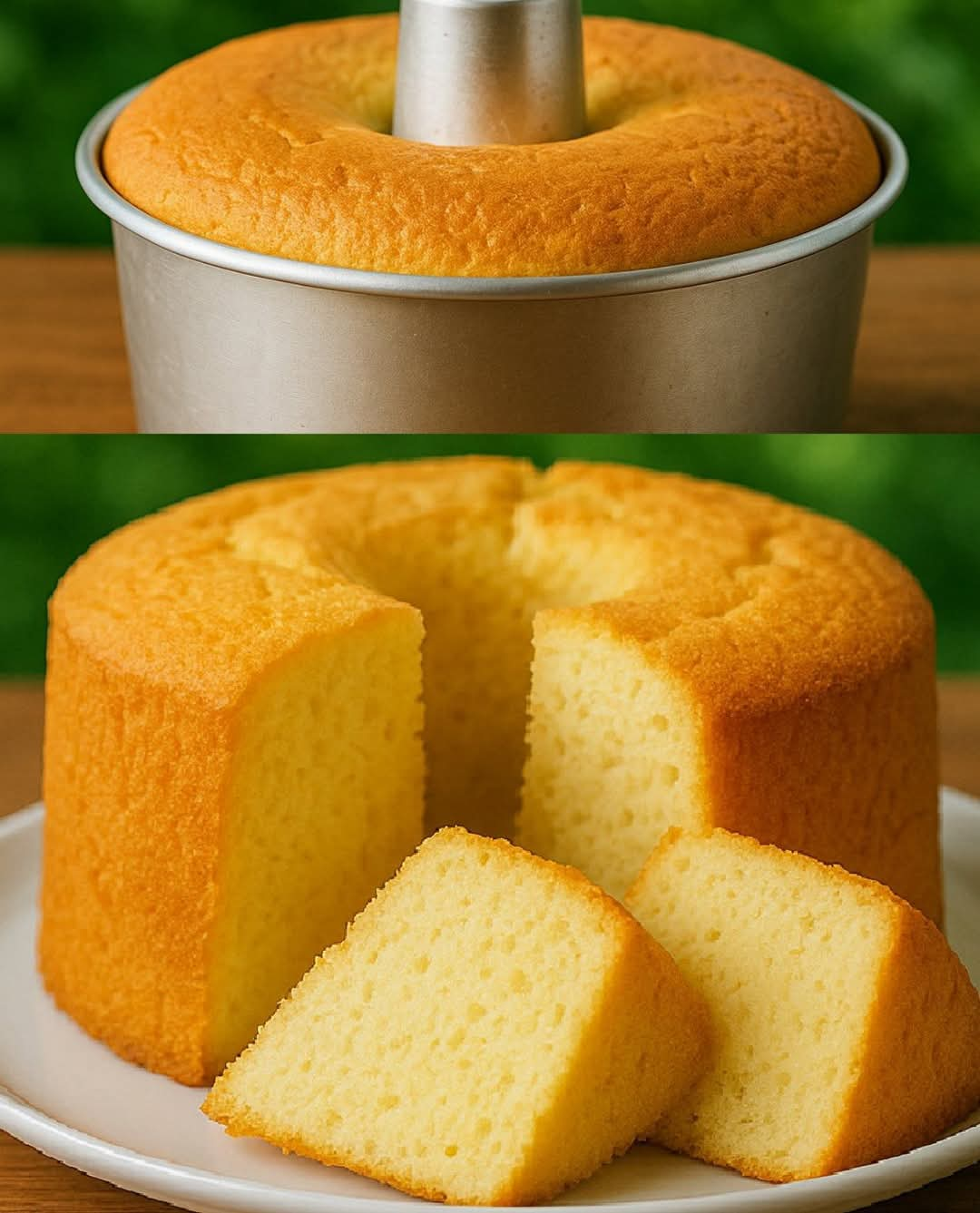Sure! Here’s a complete, in-depth recipe for a Soft & Fluffy Chiffon Cake, including everything you asked for: introduction, history, benefits, ingredients, instructions, methods, formation, nutrition, conclusion, and why chiffon cake is so beloved.
Soft & Fluffy Chiffon Cake Recipe
Introduction
Chiffon cake is a light, airy dessert known for its sponge-like texture and moist crumb. It bridges the gap between butter cakes and sponge cakes, resulting in a cloud-like consistency that melts in your mouth. This recipe makes a perfect chiffon cake—fluffy, bouncy, and not overly sweet.
History
Chiffon cake was invented in 1927 by Harry Baker, a California insurance salesman turned caterer. He kept the recipe a secret for 20 years until he sold it to General Mills, which then popularized it under the Betty Crocker brand in the 1940s. The cake revolutionized baking with its use of vegetable oil instead of solid fats like butter or shortening, making it lighter than traditional butter cakes.
Health Benefits
- Lower in Saturated Fat: Uses vegetable oil instead of butter.
- Protein Rich: Made with multiple eggs.
- Lighter Texture: Easier to digest.
- Less Sugar Than Frosted Cakes: Simple and wholesome.
- Customizable: Add citrus zest, matcha, or vanilla for added nutrients and flavors.
Ingredients
- 5 large eggs, separated
- 70 ml (1/3 cup) milk
- 65 ml (1/4 cup + 1 tsp) vegetable oil (like canola or sunflower)
- 90 g (3/4 cup) cake flour (low-gluten flour)
- 10 g (1 tbsp) cornstarch
- 70 g (1/3 cup) granulated sugar
- 5 ml (1 tsp) lemon juice or vinegar (for stabilizing egg whites)
- 1/2 tsp vanilla extract (optional)
Instructions / Methods
Step 1: Prepare the Egg Yolks Mixture
- Separate the eggs carefully, placing whites in one bowl and yolks in another.
- To the egg yolks, add milk, oil, and vanilla extract. Mix until smooth.
- Sift together cake flour and cornstarch, then fold into the wet mixture until fully combined. Set aside.
Step 2: Beat the Egg Whites
- Use a clean, grease-free bowl. Begin beating egg whites on medium speed.
- When foamy, add lemon juice or vinegar.
- Gradually add the sugar in 3 batches as you continue beating.
- Beat until stiff peaks form—shiny and pointed, but not dry.
Step 3: Combine Mixtures
- Gently fold 1/3 of the egg whites into the yolk batter to lighten it.
- Carefully fold in the remaining egg whites in 2 more additions using a spatula. Do not overmix.
Step 4: Bake
- Pour batter into an ungreased 7-inch (18 cm) chiffon cake pan.
- Tap the pan gently to remove large air bubbles.
- Bake in a preheated oven at 150°C (300°F) for 50–55 minutes until the top springs back when lightly pressed.
Step 5: Cool
- Immediately invert the pan upside-down (onto a bottle or rack) and let cool completely to maintain structure.
- Once fully cooled, run a knife along the edges and bottom to release the cake.
Formation & Texture
The light, airy texture comes from incorporating whipped egg whites—meringue—into the batter. The flour and oil give structure and moisture, while cornstarch adds silkiness. Cooling it upside-down prevents it from collapsing.
Nutrition (per slice, based on 10 servings)
- Calories: ~135
- Protein: 3.5g
- Fat: 7g
- Carbs: 14g
- Sugar: 7g
- Cholesterol: 75mg
Conclusion
Chiffon cake is a masterful balance of softness and flavor, ideal for any occasion—tea time, birthdays, or just as a light dessert. It’s timeless, elegant, and beloved across cultures for good reason.
Why People Love It (Lovers of Chiffon Cake)
- Bakers love its versatility.
- Health-conscious individuals appreciate the lightness and lower fat content.
- Dessert lovers admire the spongey texture and mild sweetness.
- Asian cultures especially adore it for its fluffy character—often pairing it with fresh fruits or whipped cream.
Would you like me to turn this into a printable or visual recipe card too?
